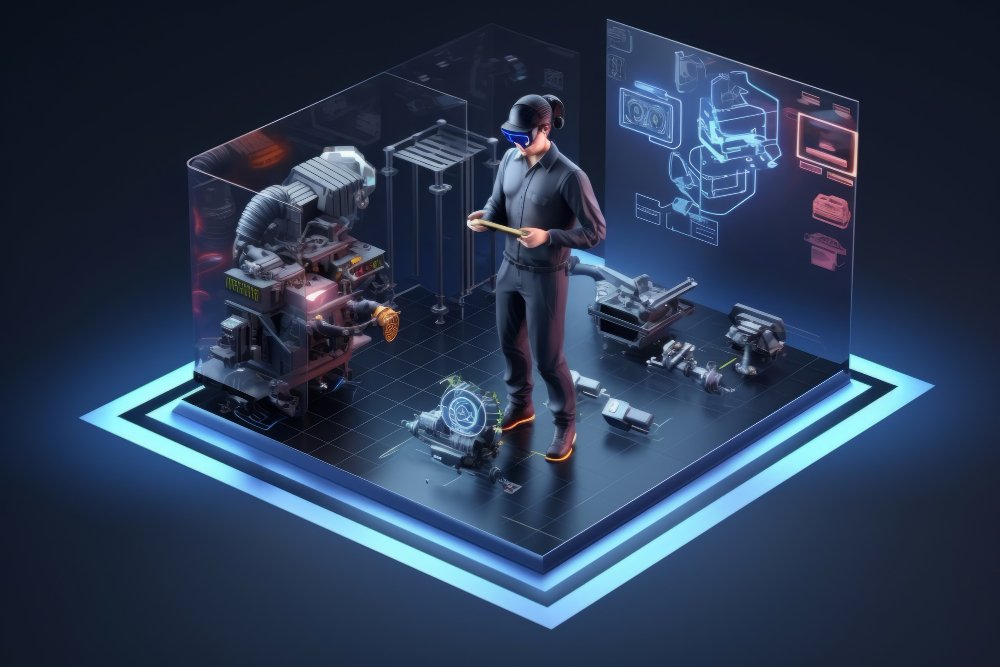Introduction
Integrating mobile technology into the automotive industry has transformed how we interact with vehicles. From early in-car telematics to today’s advanced connected car systems, the evolution of mobile technology has significantly impacted driving experiences, safety, and the future of transportation. This article delves into the development of mobile technology in the automotive sector, exploring its past, present, and future.
How to Improve Your Gaming Experience with LCFTechMods
The Early Days of In-Car Telecommunication
Beginnings of Automotive Technology
The journey of mobile technology in vehicles began with the introduction of basic in-car communication systems. In the late 20th century, cars were equipped with early forms of telematics, such as basic cellular communication systems and rudimentary GPS navigation. These systems represented the initial steps toward more sophisticated mobile technology integration.
One of the pioneering innovations was the introduction of in-car phones. Initially designed to provide drivers with communication capabilities while on the road, these systems were limited by the technology of the time. Early in-car phones were often bulky and required complex installation procedures.
GPS and Navigation Systems
Another significant development was the integration of GPS technology. In the 1990s, GPS navigation systems began to appear in vehicles, providing drivers with real-time location tracking and route guidance. This advancement marked a shift from traditional paper maps to digital navigation, enhancing driving convenience and safety.
The Rise of Connectivity: Early 2000s
Introduction of Telematics Systems
The automotive industry began incorporating more sophisticated telematics systems as mobile technology advanced. These systems offered a range of features, including emergency assistance, vehicle diagnostics, and remote access. The advent of cellular networks, such as 2G and 3G, enabled vehicles to communicate with external networks, paving the way for enhanced connectivity.
Telematics systems like OnStar and BMW’s ConnectedDrive emerged during this period, providing drivers with access to roadside assistance, real-time traffic updates, and vehicle tracking. These systems represented a significant leap forward in integrating mobile technology into vehicles.
The Role of Smartphones
The proliferation of smartphones in the early 2000s further accelerated the integration of mobile technology into the automotive industry. Smartphone applications began to play a crucial role in enhancing the driving experience. Apps for navigation, entertainment, and communication became increasingly popular, allowing drivers to leverage their smartphones for various in-car functions.
The Connected Car Era: 2010s and Beyond
Advanced Infotainment Systems
The 2010s witnessed a significant shift with the development of advanced infotainment systems. These systems integrated smartphone connectivity, allowing drivers to directly access apps, music, and navigation features from their vehicle’s dashboard. Technologies like Apple CarPlay and Android Auto revolutionized the in-car experience, seamlessly integrating smartphones and vehicle systems.
Infotainment systems also began incorporating voice recognition technology, enabling drivers to control various functions using voice commands. This development enhanced safety by minimizing the need for physical interaction with the vehicle’s controls.
How to Set Up Aruba 6300M for the First Time: A Comprehensive Guide
Vehicle-to-Everything (V2X) Communication
Another significant advancement during this era was the emergence of Vehicle-to-Everything (V2X) communication. V2X technology allows vehicles to communicate with each other and with infrastructure such as traffic lights and road signs. This technology enhances safety by providing real-time information about road conditions, traffic patterns, and potential hazards.
V2X communication also supports autonomous driving technology by enabling vehicles to share information about their surroundings and coordinate actions. This development represents a crucial step toward realizing fully autonomous cars.
The Future of Mobile Technology in the Automotive Industry
Integration of 5G Technology
As mobile technology continues to evolve, the automotive industry is preparing for the integration of 5G technology. 5G networks promise significantly higher data transfer speeds and lower latency than previous generations of mobile networks. This advancement will enhance real-time communication between vehicles, infrastructure, and external networks, supporting the development of more advanced driver-assistance systems and autonomous driving capabilities.
5G technology will also enable the implementation of advanced telematics features, such as real-time vehicle diagnostics and over-the-air software updates. This will allow manufacturers to address issues and introduce new features without requiring drivers to visit service centres.
Enhanced Vehicle-to-Everything (V2X) Communication
The future of V2X communication is set to be even more advanced with the integration of 5G technology. Enhanced V2X communication will provide vehicles with more accurate and timely information about their environment, improving safety and efficiency. For example, vehicles will receive real-time updates about traffic conditions, road hazards, and weather changes, enabling more informed driving decisions.
Additionally, integrating V2X technology with smart city infrastructure will enable better coordination between vehicles and urban environments. This will contribute to developing intelligent transportation systems that optimize traffic flow, reduce congestion, and enhance overall road safety.
Autonomous Vehicles and Mobile Technology
The advancement of mobile technology is closely linked to the development of autonomous vehicles. Autonomous vehicles rely on a combination of sensors, cameras, and communication systems to navigate and make driving decisions. Mobile technology provides real-time data and enables communication between vehicles and infrastructure.
In the future, autonomous vehicles will likely become more common on our roads, thanks in part to advancements in mobile technology. These vehicles will be equipped with sophisticated communication systems that enable them to interact with other cars, traffic management systems, and cloud-based services.
Final Thoughts
The evolution of mobile technology in the automotive industry has been marked by significant advancements that have transformed the driving experience. From early in-car telematics to today’s connected car systems and the promise of future innovations, mobile technology plays a pivotal role in shaping the future of transportation.
As we look ahead, the integration of 5G technology, enhanced V2X communication, and the development of autonomous vehicles will further revolutionize the automotive industry. These advancements will improve safety and convenience and pave the way for more intelligent and connected transportation systems.
Questions and Answers
1. How has mobile technology improved vehicle safety?
Mobile technology has improved vehicle safety by developing advanced telematics systems, real-time vehicle diagnostics, and Vehicle-to-Everything (V2X) communication. These technologies provide drivers with crucial information about road conditions, traffic patterns, and potential hazards, enhancing safety.
2. What role do smartphones play in modern vehicles?
Smartphones play a significant role in modern vehicles by providing access to various applications, such as navigation, entertainment, and communication. Technologies like Apple CarPlay and Android Auto allow seamless integration between smartphones and vehicle infotainment systems, enhancing the driving experience.
3. What are the future trends in mobile technology for the automotive industry?
Future trends in mobile technology for the automotive industry include integrating 5G technology, enhanced V2X communication, and the development of autonomous vehicles. These advancements will support real-time communication, improve safety, and enable more intelligent and connected transportation systems.
4. How will 5G technology impact the automotive industry?
5G technology will impact the automotive industry by providing higher data transfer speeds, lower latency, and improved real-time communication. This will enhance driver-assistance systems, enable advanced telematics features, and support the development of autonomous vehicles.
5. What is Vehicle-to-Everything (V2X) communication?
Vehicle-to-Everything (V2X) communication is a technology that allows vehicles to communicate with each other and with infrastructure such as traffic lights and road signs. V2X communication enhances safety by providing real-time information about road conditions, traffic patterns, and potential hazards.
Sources:
- National Highway Traffic Safety Administration (NHTSA) – Vehicle Technology
- IEEE Spectrum – The Future of Autonomous Vehicles
- TechCrunch – The Rise of 5G and Its Impact on Automotive Technology
- Automotive News – The Evolution of Telematics
This article falls into the Technology and Automotive Industry categories, focusing on the evolution of mobile technology and its impact on vehicles.




